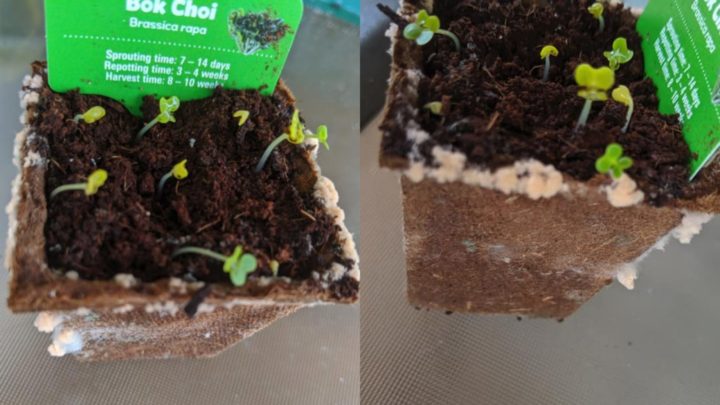Mould warning! Woolworths Discovery Garden shopper spots new strain on plant

Woolworths Discovery Garden is becoming the new hot topic among outdoor-lovers across the country, but just months after several shoppers reported seeing mould taking over their plants, one grower has now spotted a whole new strain emerging in their own pot.
Taking to popular Facebook group Woolworths Little Garden / Discovery Garden, the gardening lover shared two photos of the Bok Choi plant with a white mould spread across the soil base – before questioning whether it could be dangerous. And it sparked a huge reaction from fellow shoppers, who began debating what it could be.
“This looks like white mould. White mould is dangerous to plants and is a disease. But it also looks like slime mould, which is not dangerous to plants. So I do not know which one it is. But I will try my luck by repotting these on their own and hopefully they will grow still,” they wrote.
Most people claimed it was Slime Mould in the end, which is more commonly dubbed ‘dog vomit mould’ due to its appearance and slightly lumpy consistency. Luckily, it’s not dangerous to plants, animals or humans, according to Master Gardener.
“Although many people are alarmed, grossed out, or frightened by it, this slime mold (sic) is harmless to plants, pets, and humans (although the dusty spores can irritate people with allergies, asthma, or other respiratory conditions). Slime molds (sic) are usually only a cosmetic problem and will disappear on their own in a few days,” the website stated.
Anyone growing edible plants or veggies are advised to remove the mould immediately all the same. “There is generally no need to control these odd organisms, but if it is really bothering someone, an aethalium can be raked out or scraped off, or broken up and allowed to dry out to make it less noticeable,” the gardening website added.
“Stirring up the mulch will help break up any plasmodia as well as dry out the area to make it less hospitable for slime mold (sic) growth. Using something other than hardwood bark for mulch (such as gravel, pine bark, cedar bark, or pine straw) and reducing excessive watering will reduce the likelihood of the slime mold (sic) showing up, but won’t eliminate it.”
And the Woolworths team have since responded to the worried comments, stating it’s as simple as scraping the mould off to eradicate the problem. They reassured planters that it’s perfectly natural to see mould growing now and again, as it’s a natural product.
“Mould is found everywhere and in this case is caused by local growing conditions such as moisture and airflow,” they said in a statement to Starts at 60. “If you see mould appearing, we suggest gently wiping it off with a tissue or cloth. If in doubt, you may wish to dispose of the plant as a precaution.
“Although the mould doesn’t damage the plant, it is unsightly and usually indicates that the pots are being overwatered and have poor drainage or circulation. To prevent mould growth: Maintain proper ventilation by leaving your seedling kits near an open window or outside when weather permits.”
They added two more options, including: “Ensure that your seedling kits get plenty of sunlight. Control the amount of moisture you’re giving your seedling pot, soil should be moist but not too wet.”








 Proudly Australian owned and operated
Proudly Australian owned and operated